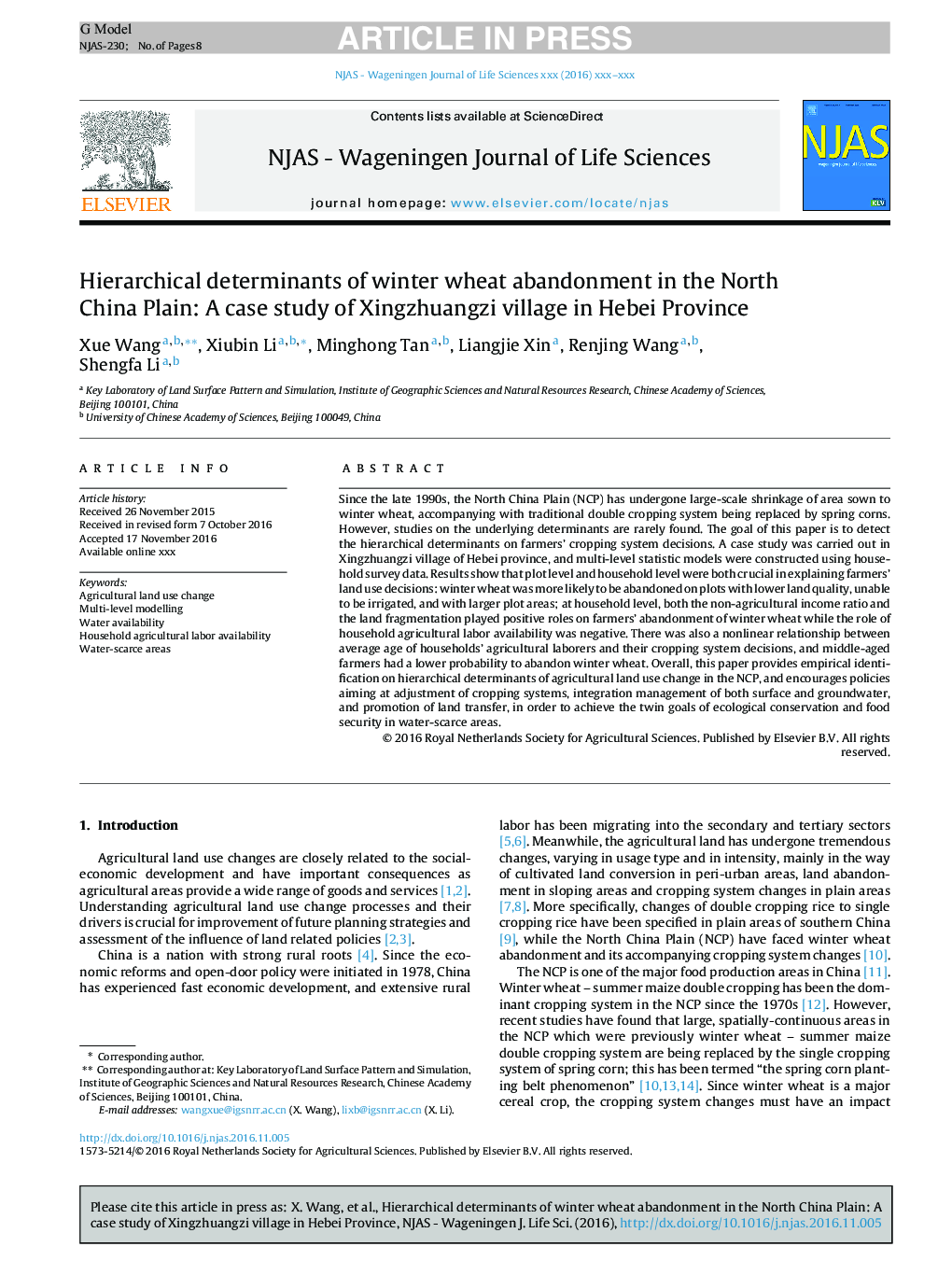| Article ID | Journal | Published Year | Pages | File Type |
|---|---|---|---|---|
| 5760536 | NJAS - Wageningen Journal of Life Sciences | 2017 | 8 Pages |
Abstract
Since the late 1990s, the North China Plain (NCP) has undergone large-scale shrinkage of area sown to winter wheat, accompanying with traditional double cropping system being replaced by spring corns. However, studies on the underlying determinants are rarely found. The goal of this paper is to detect the hierarchical determinants on farmers' cropping system decisions. A case study was carried out in Xingzhuangzi village of Hebei province, and multi-level statistic models were constructed using household survey data. Results show that plot level and household level were both crucial in explaining farmers' land use decisions: winter wheat was more likely to be abandoned on plots with lower land quality, unable to be irrigated, and with larger plot areas; at household level, both the non-agricultural income ratio and the land fragmentation played positive roles on farmers' abandonment of winter wheat while the role of household agricultural labor availability was negative. There was also a nonlinear relationship between average age of households' agricultural laborers and their cropping system decisions, and middle-aged farmers had a lower probability to abandon winter wheat. Overall, this paper provides empirical identification on hierarchical determinants of agricultural land use change in the NCP, and encourages policies aiming at adjustment of cropping systems, integration management of both surface and groundwater, and promotion of land transfer, in order to achieve the twin goals of ecological conservation and food security in water-scarce areas.
Related Topics
Life Sciences
Agricultural and Biological Sciences
Agricultural and Biological Sciences (General)
Authors
Xue Wang, Xiubin Li, Minghong Tan, Liangjie Xin, Renjing Wang, Shengfa Li,
